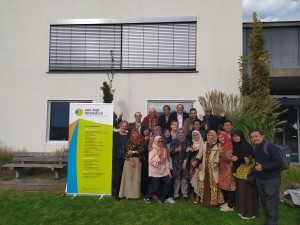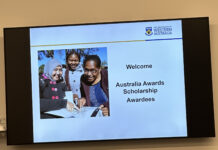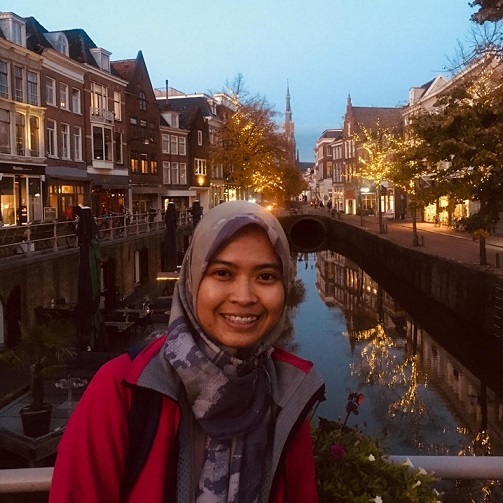No matter what one does – whether they are an athlete, a lawyer, or a pop star – continuous improvement is essential to enhance one’s capability and performance. Our columnist Novelita W. Mondamina (Veli) is a bioenergy lecturer who had the chance to hone her skills in a fully-funded, short-term training program in Leeuwarden, the Netherlands. She shares how this experience inspires her to become a better educator, researcher, and to give back to society.
***
In April 2019, I discovered a wonderful opportunity for vocational lecturers to join a retooling program, sponsored by Indonesia’s Ministry of Research, Technology and Higher Education. In essence, it is a short-term, hands-on training program aimed at improving the competence of vocational lecturers in Indonesia. Ultimately, these reskilled lecturers are hoped to be able to contribute to improving the quality of their home institutions and respective alumni.
From the areas of study offered by the program, I chose to apply for the bioenergy production. It fits perfectly with my passion and field of work. To me, bioenergy is a beautiful mix of chemistry, energy, waste processing technology, sociology, and politics. As a lecturer in palm processing technology, I was also curious about how to optimize the utilization of oil palm waste for bioenergy production purposes.
Needless to say, I was thrilled when I learned that they had offered me a spot. The program took place during six weeks of September-October 2019 at the University of Applied Science, Van Hall Larenstein, Leeuwarden, the Netherlands. Leeuwarden is a small town 2-hour drive away from Amsterdam’s Schiphol airport.
All aboard the training train!
Given the relatively short duration, the program was jam-packed with activities and assignments, as depicted below:

There were four main activities each week: class session, excursion, lab experiment, and self-evaluation, which collectively allowed us to learn by doing. In class sessions, we learned the fundamental theories. Lab experiments then provided us with the opportunity to see how these theories work in real life. Excursions gave us further understanding of how bioenergy is implemented in industry and contributes to economic growth.
Last but not least, we spared some time for self-evaluation at the beginning of each week. The purpose was to reflect on our learning experience, identify what works and what doesn’t, and figure out ways to do better. We asked ourselves, what did we not understand well enough? What should we do to catch up? This allowed us to assess how well we were doing in the program and to solve problems early.
In the core syllabus, you can see that we studied multiple aspects of bioenergy production, including technology, economy, material cycles, and emission calculation. Although bioenergy is generally considered as a form of renewables with zero emission, there are still some parts of the production process that generate carbon emission, albeit at a much lower rate than fossil fuel.

On top of these, participants still had to fulfil their duties as a lecturer in their respective institutions. This means that we had to prepare course materials, quizzes, and tasks for our students back home while following the program’s tight schedule. This was quite tricky given the 5-hour time difference between Indonesia and the Netherlands.
By the end of the retooling program, participants were asked to develop a curriculum on bioenergy production. This curriculum was expected to be added to the existing curricula of their respective home institutions, or alternatively, serve as an entirely new curriculum.
In the final week, we performed a final evaluation of our performance throughout the program. A few classmates and I presented to a small audience, including all the lecturers, who then graded us both as an individual and as a group.
The graduation was very simple – no special outfit nor special ceremony involved. Cheerful group pictures and warm farewell concluded our 6-week journey, making the last bit of memory before our flight back to Jakarta the day after.

Returning to home university: What’s next?
Now that I was back in Indonesia, what should I do next? I had the responsibility to utilize the knowledge and experience I gained during the program to help advance vocational higher education in the country, especially through my home university.
Education
In Indonesia, lecturers have the duty to embody the three pillars of higher education, or Tri Dharma Perguruan Tinggi in Indonesian. The first is education, meaning that lecturers shall deliver knowledge in the form of structured syllabi, courses, and curricula.
In this context, my job was to educate students about bioenergy. During the program, I developed a strategic plan to include bioenergy in my home university’s curriculum. The goal was to execute the new curriculum as soon as realistically possible.
Given my home university’s existing programs and internal processes, I had to map the challenges and opportunities and devise the best strategy to reach that goal. It would take some time to do so, and I have now learned that it would be more feasible to adjust the syllabus of particular courses instead. This means that syllabus on bioenergy can be inserted gradually to existing courses while a new curriculum is being developed.
Research
The second pillar is research, whereby lecturers shall contribute to enriching research activities in the country. Indeed, the retooling program gave me ideas to create a research roadmap, focusing on palm oil and bioenergy production.
During an inspiring lab experiment session in the program, we attempted to make a lab-scale bioreactor to produce biogas, one type of bioenergy products. Now, I am in the process of duplicating it in order to provide students with insights on how bioreactor works to produce biogas. I am also developing a research plan on oil palm waste utilization, including on how to optimize its potential as a source of biomass energy.
Community service
The third and last pillar of higher education is community service. Lecturers ought to utilize their knowledge to create positive impact on the society. This part is the most challenging for me, because it is not easy to turn a small bioenergy-related project into something that can be mass-produced and used by everyday people.
I am currently still in the process of finding ‘it’. Whatever it is, I hope in the future bioenergy can be produced and utilized in a simpler, more affordable way, thus giving the highest value-add to the lives of the people in this country. And I hope with the expertise and experience that I have acquired thus far, I get to be a part of that story.
***
Note: if you are interested, learn more about the retooling program at https://retoolingvokasi.ristekdikti.go.id/
Photos provided by author.








